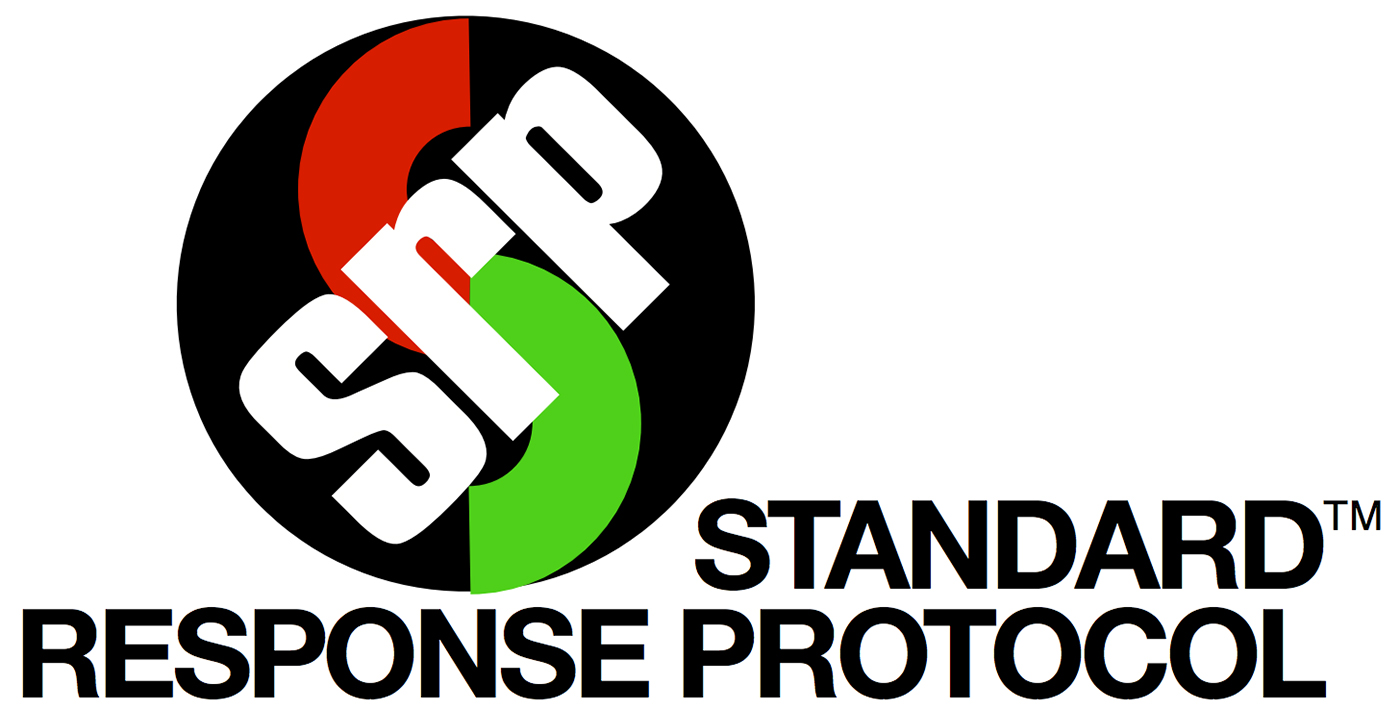TxSSC
K-12 Standard Response Protocol Toolkit
1.0 About the Standard Response Protocol (SRP)

A critical ingredient in the safe school recipe is the uniform classroom response to an incident at school. Weather events, fires, accidents, intruders and other threats to student safety are scenarios that are planned and trained for by school and district administration and staff.
Historically, schools have taken this scenario-based approach to respond to hazards and threats. It’s not uncommon to find a stapled sheaf of papers or even a tabbed binder in a teacher’s desk that describes a variety of things that might happen and the specific response to each event.
SRP is Action Based
The Standard Response Protocol is based not on individual scenarios but on the response to any given scenario. Like the Incident Command System (ICS), SRP demands a specific vocabulary but also allows for great flexibility. The premise is simple – there are five specific actions that can be performed during an incident. When communicating these actions, the action is labeled with a "Term of Art" and is then followed by a "Directive". Execution of the action is performed by active participants, including students, staff, teachers and first responders.
- Hold is followed by a location such as "in your room or area" and is used to clear a specific area, or hallways, in order to manage a situation.
- Secure is followed by: "Get Inside. Lock outside doors" and is the protocol used to safeguard students and staff within the building.
- Lockdown is followed by "Locks, Lights, Out of Sight" and is the protocol used to secure individual rooms and keep students quiet and in place.
- Evacuate is always followed by a location and is used to move students and staff from one location to a different location in or out of the building.
- Shelter is always followed by the hazard and a safety strategy and is the protocol for group and self-protection.
These specific actions can act as both a verb and a noun. If the action is Lockdown, it would be announced on public address as "Lockdown! Locks, Lights, Out of Sight." Communication to local Law Enforcement Agency would then be "We are under Lockdown." Each response has specific student and staff action. The Evacuate response is always followed by a location: "Evacuate to the Bus Zone." Responses can also be combined: "Evacuate to Hallway; Shelter for Tornado; Drop, Cover and Hold."
Benefits
The benefits of SRP become quickly apparent. By standardizing the vocabulary, all stakeholders can understand the response and status of the event. For students, this provides continuity of expectations and actions throughout their educational career. For teachers, this becomes a simpler process to train and drill. For first responders, the common vocabulary and protocols establish a greater predictability that persists through the duration of an incident. Parents can easily understand the practices and can reinforce the protocol. Additionally, this protocol enables rapid response determination when an unforeseen event occurs.
The protocol also allows for a more predictable series of actions as an event unfolds. An intruder event may start as a Lockdown, but as the intruder is isolated, first responders would assist as parts of the school go to an "Evacuate to the Gym and Lockdown," and later "Evacuate to the Bus Zone."
Secure vs. Lockdown
The differentiation between Secure and Lockdown is a critical element in SRP. A Secure action recovers all students from outside the building, secures the building perimeter and locks all outside doors. This would be implemented when there is a threat or hazard outside of the building. Criminal activity, dangerous events in the community, or even a vicious dog on the playground would be examples of a Secure response. While the Secure response encourages greater staff situational awareness, it allows for educational practices to continue with little classroom interruption or distraction.
“The differentiation between Secure and Lockdown is a critical element in SRP.”
Lockdown is a classroom-based protocol that requires locking the classroom door, turning off the lights and placing students out of sight of any corridor windows. Student action during Lockdown is to remain quiet. It does not mandate locking outside doors. There are several reasons for not locking perimeter doors during a Lockdown. Risk is increased to students or staff in exposed areas attempting to lock outside doors. Locking outside doors inhibits entry of first responders and increases risk as responders attempt to breach doors.
There may be situations where both Lockdown and Secure need to be performed, but in this case they are identified individually. "Secure! Get Inside. Lock outside doors. Lockdown! Locks, Lights, out of Sight." would be announced on public address. We are in "Lockdown and Secure" would be conveyed to emergency services or 911.
Tactical Responses
SRP also acknowledges that some school incidents involve a tactical response from law enforcement and suggests consultation with local law enforcement regarding expectations and actions.